摘要在当下,蔬菜果蔬等单价已经关乎到人民大众的生活中密切关注的话题。根据报道称蔬菜价格如此上涨其中最重要的一个原因就是在运输过程中运输路费价格高收费,运输距离和运输路径如果足够远不仅影响果蔬的新鲜程度而且也增加了人工成本车辆运输成本以及高速公路上收费高。随着经济的飞速发展,蔬菜健康越来越被人们所重视。人们对生活质量的要求提升,对绿色蔬菜的新鲜程度也要求越来越高。但物流行业缺少顶尖的高级人才,对于蔬菜的配送网络还不能达到现代化的要求。在这一背景下,本文通过对寿光蔬菜的生产制造、物流运输、仓储管理、回收等环节进行详细调查,从绿色物流的角度出发,基于节约里程法进行路径优化分析,并针对采购、制造、配送、回收流程中出现的不环保现象提出优化方案。最终达成降低配送成本,以及在疫情的前提下合理规划配送路线,减少不必要的损失的目的。关键词:蔬菜运输:路径优化:节约里程法:运输成本:多配送中心AbstractAt present,the unit price of vegetables and vegetables has become a topic of close attentionin the life of the public.According to the report,one of the most important reasons for such a risein vegetable prices is the high cost of transportation fees during the transportation process.If thetransportation distance and transportation path are far enough,it will not only affect the freshnessof fruits and vegetables,but also increase labor costs,vehicle transportation costs and highhighway tolls.With the rapid development of economy,people pay more and more attention tovegetable health.People have higher requirements for the quality of life,and the freshness ofgreen vegetables is also more and more demanding.However,the logistics industry lacks toptalents,and the distribution network of vegetables can not meet the requirements ofmodernization.In this context,this paper through the Shouguang vegetable production andmanufacturing,logistics transportation,storage management,recycling and other links ofdetailed investigation,from the perspective of green logistics,based on saving miles method pathoptimization analysis,and for the procurement,manufacturing,distribution,recycling process inthe phenomenon of environmental protection is proposed.Finally,the goal of reducing thedistribution cost,reasonably planning the distribution route under the premise of the epidemic,and reducing unnecessary losses was achieved.Key words:Vegetable transportation;path optimization:mileage saving method;transportationcost;multiple distribution centers0目录摘要Abstract...目录…................第1章绪论…1.1研究背景及研究意义…1.1.1研究背景1.1.2研究意义…1.2国内外相关研究现状1.2.1国外研究现状…1.2.2国内研究现状.21.3研究内容及研究方法..21.3.1研究内容.21.3.2研究方法..3第2章寿光蔬菜配送路径优化的概念与前景42.1蔬菜配送的概况.42.1.1配送路径优化的概念.42.1.2寿光蔬菜配送发展现状及未来前景..42.2寿光蔬菜配送存在问题..5第3章蔬菜配送路径问题概述….83.1车辆路径问题概述83.11车辆路径问题描述…83.1.2多配送中心路径问题概述.83.1.3多配送中心传统解决方法.83.2联合配送下车辆路径问题.93.2.1联合配送的概念及特点.93.2.2联合配送的车辆路径网络.103.2.3求解算法概述10第4章寿光蔬菜配送路径优化模型.204.1问题描述与假设说明204.2模型参数及变量里.44444444444444444204.3模型构建224.4求得最优解.25第5章寿光蔬菜配送路径改进策略.275.1引进高端技术人才….275.2加强蔬菜配送基础设施投入.275.3建立物流信息平台275.4政府加强对运输物流的管理275.5结果分析28结语29参考文献.30致谢.32v第1章绪论1.1研究背景及研究意义1.1.1研究背景伴随着我国城镇化进程的持续加速,以及人们的消费水平的提高,生鲜食品的生产和流通量在每年都有增加。据2022年,我国生鲜食品的统计数据显示,其总产量达到了13.78亿吨左右,总产值达到了9万亿元。在这样的情况下,与生鲜食品有关的冷链物流配送受到了越来越多的重视。但是,当前,从上游供应商到下游零售商的整个冷链运输流程,几乎有半数以上的时间和成本都花在了运输和配送这一环节上,尤其是在蔬菜配送方面。因此,从配送中心到各顾客需求点的物流配送,已经成为了当前迫切需要解决的问题。如果这种情况不得以解决,将会限制整个城市生鲜冷链的发展。对当前我国生鲜农产品在流通中所遇到的困难进行了分析,得出了如下现状:第一,基础设施落后,损失大:根据国家对生鲜冷链物流的统计,2019年的市场需求将会达到2.33亿吨,比上年增加了4439万吨,比上年增加了23.52%,第二,我们的人均冷库空间只有0.132立方米,而美国的0.49立方米,是我们的3.7倍。第三,我国新鲜食品的损失率也很高,与欧美发达国家5%的新鲜食品损失率相比,我国新
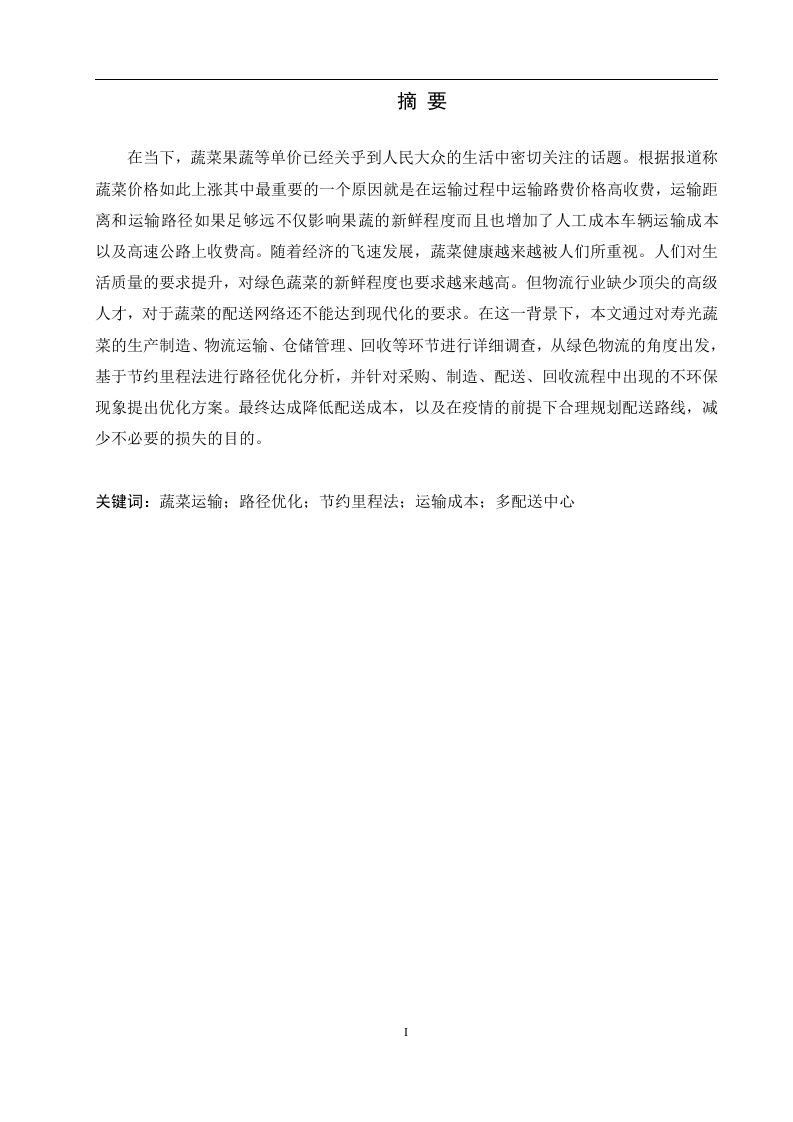
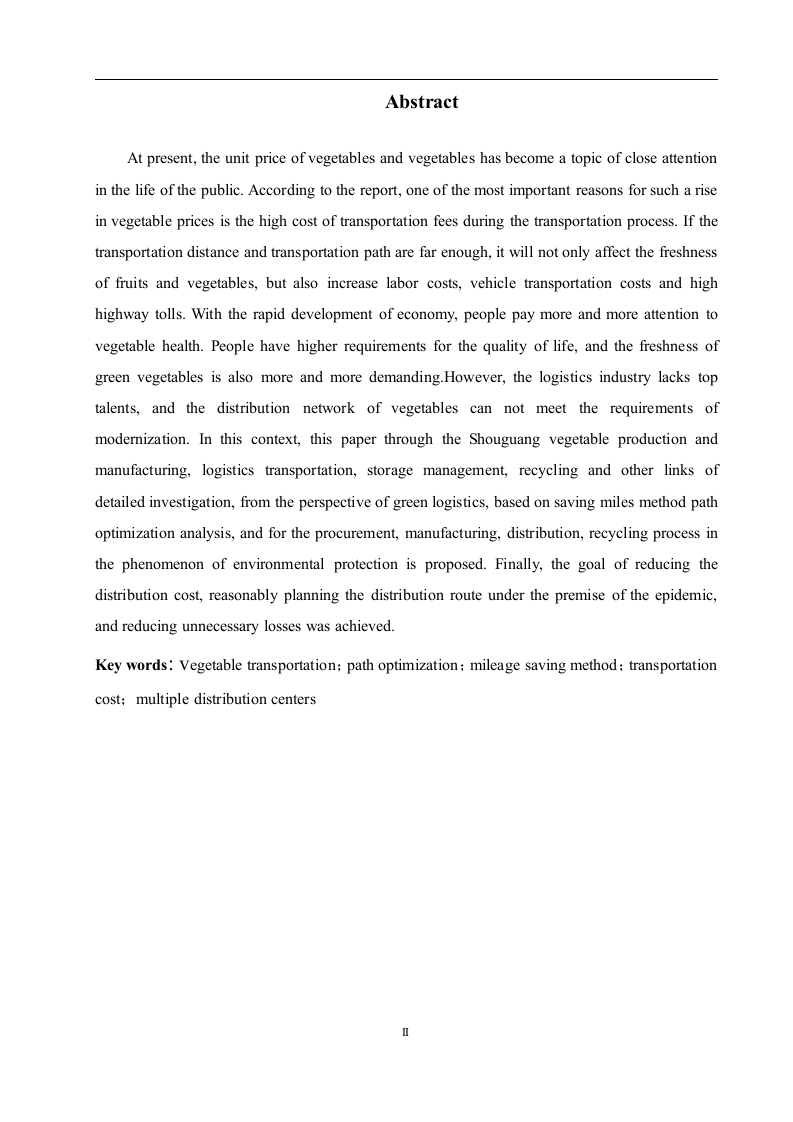
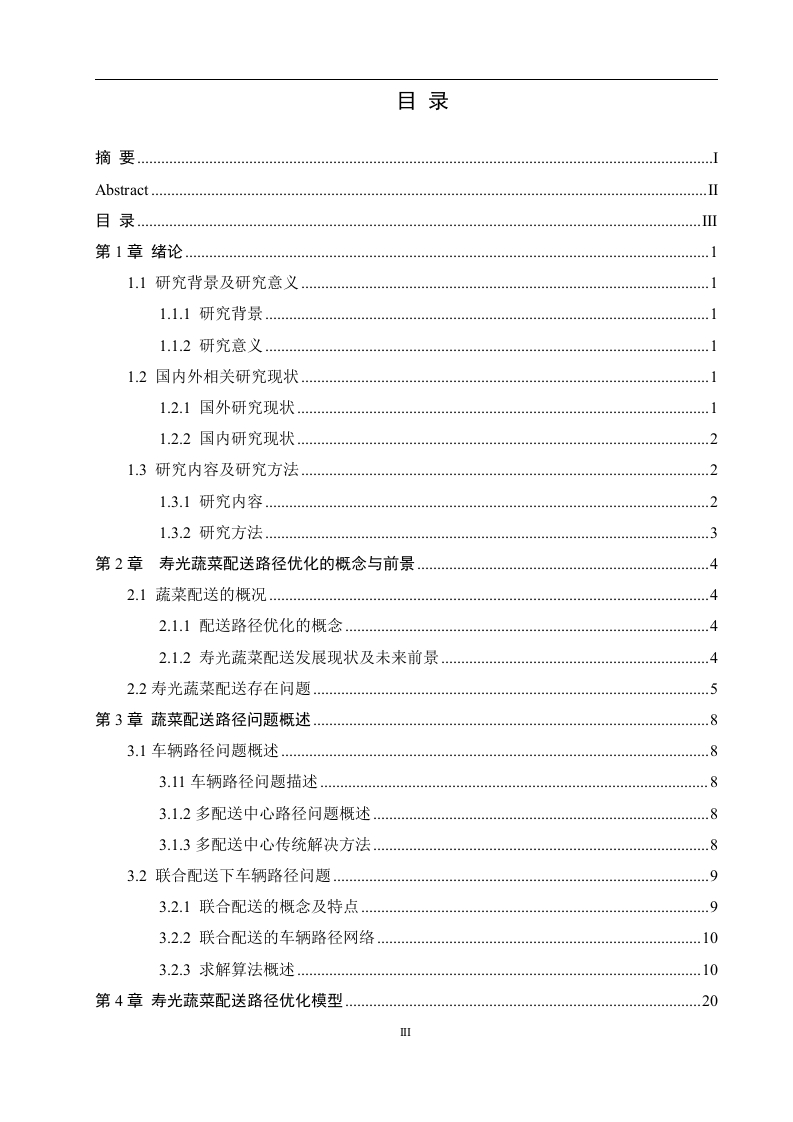
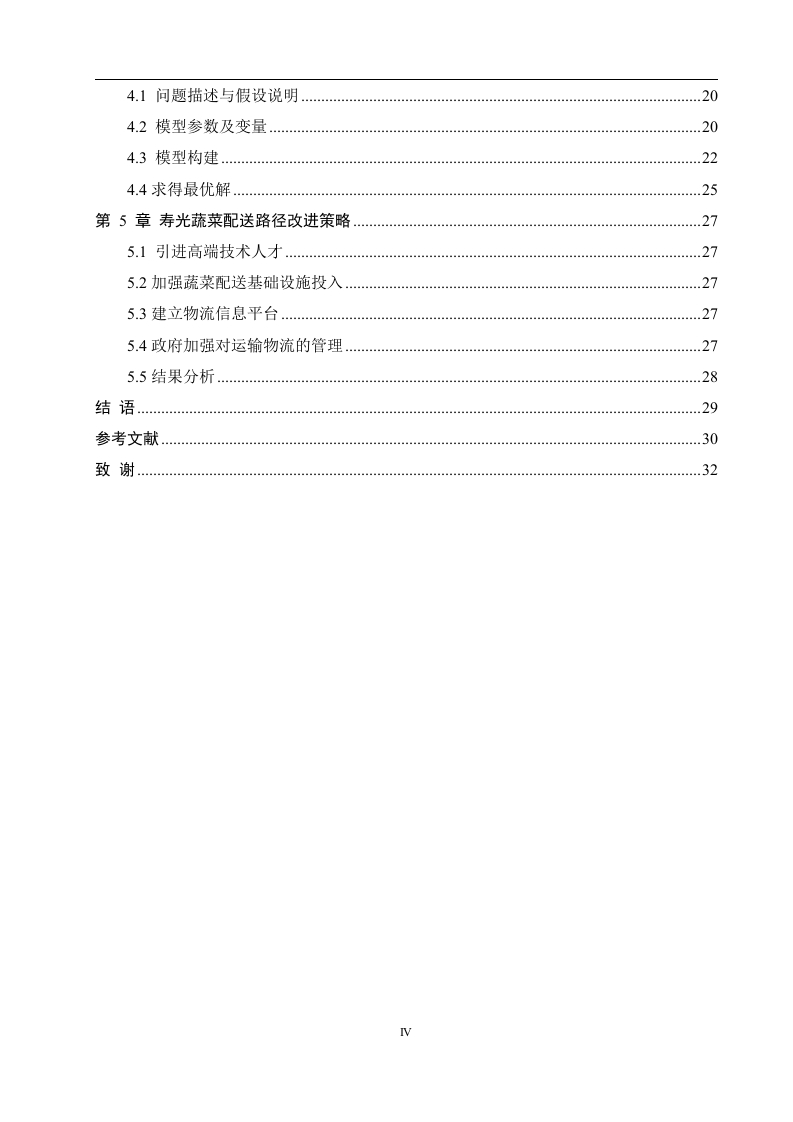
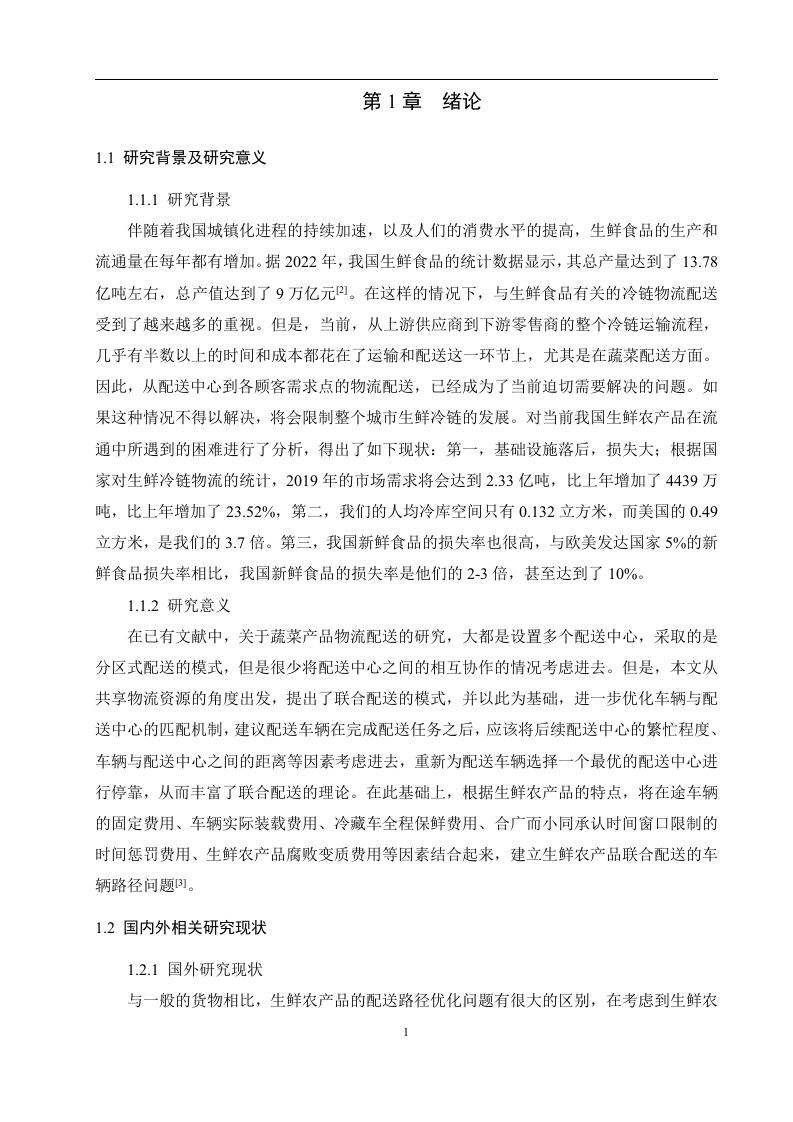
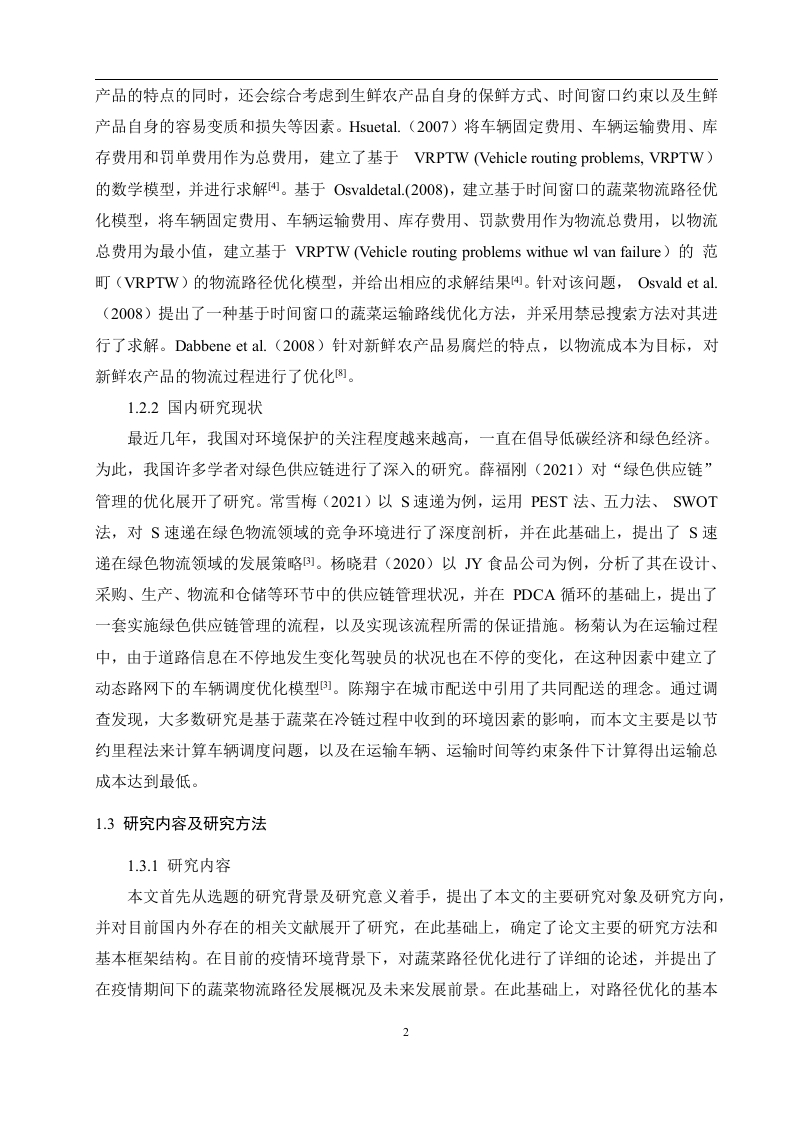
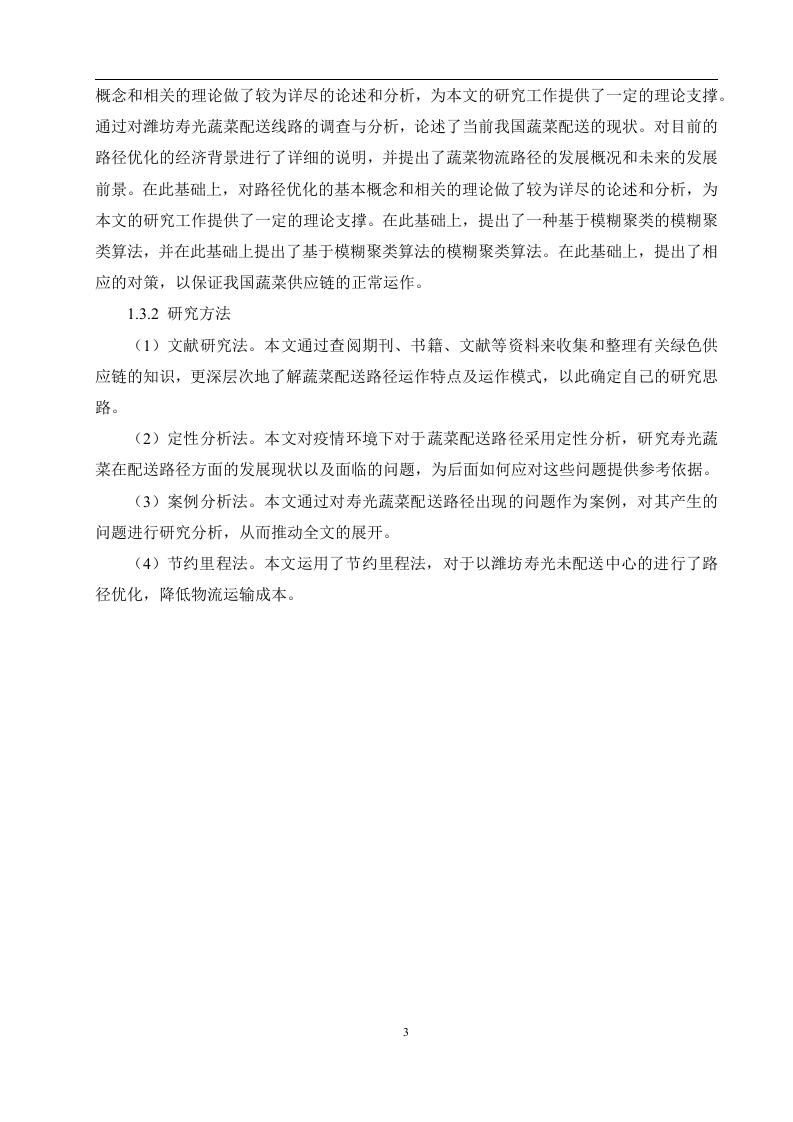
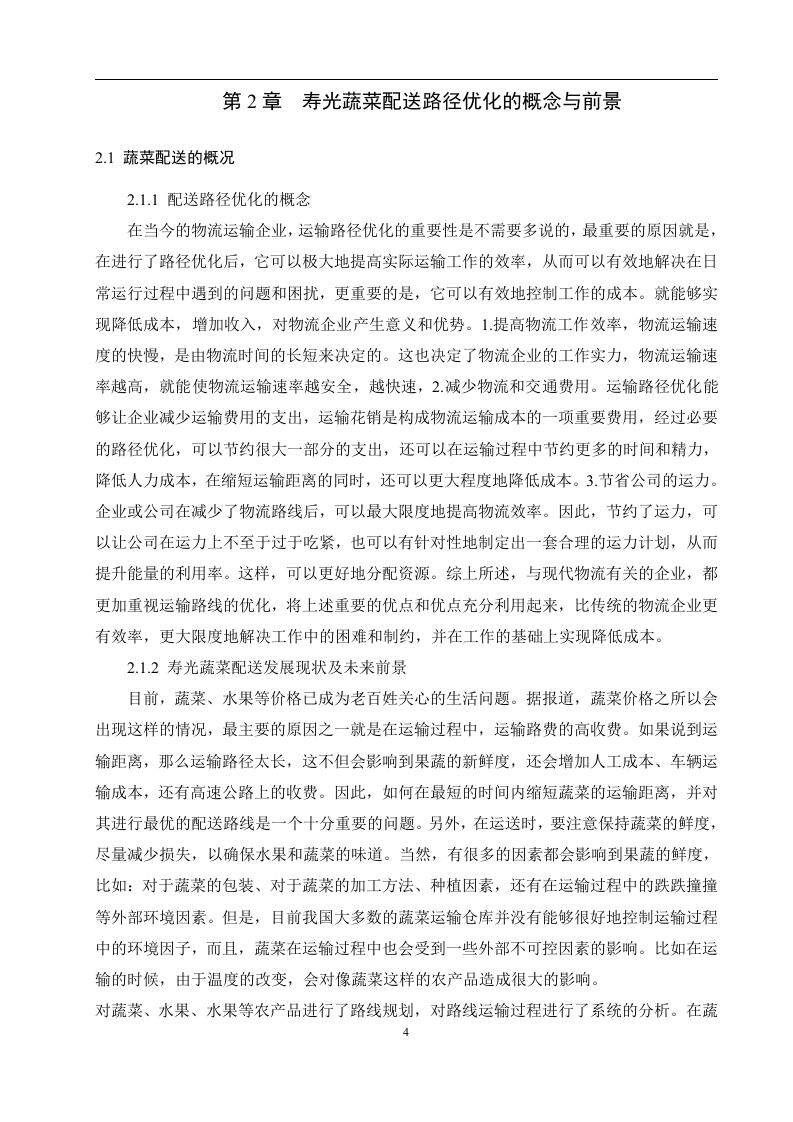









暂无评论内容